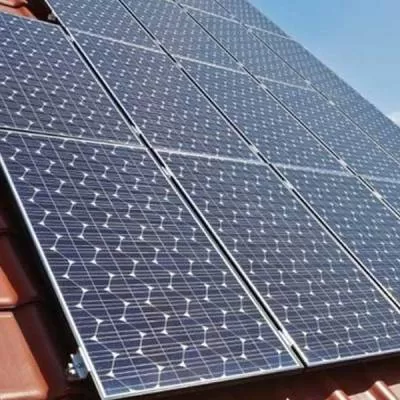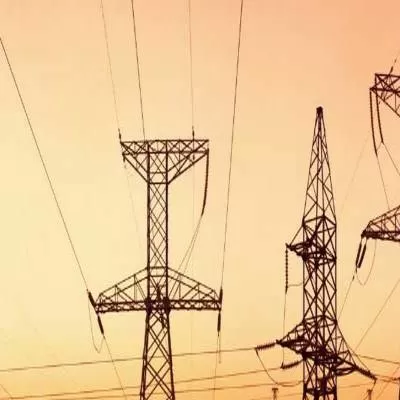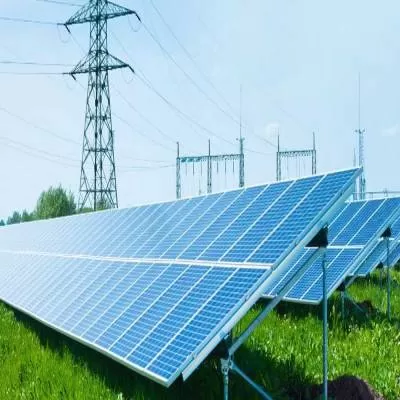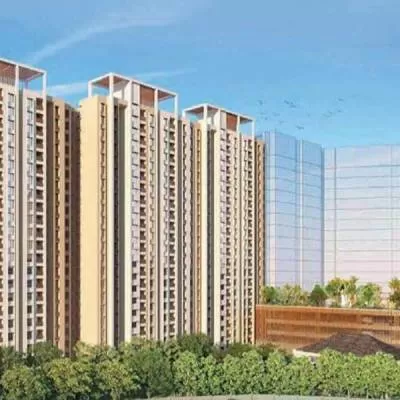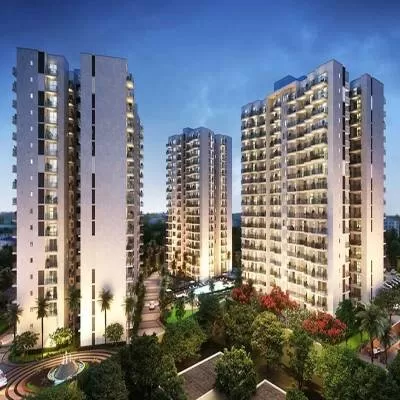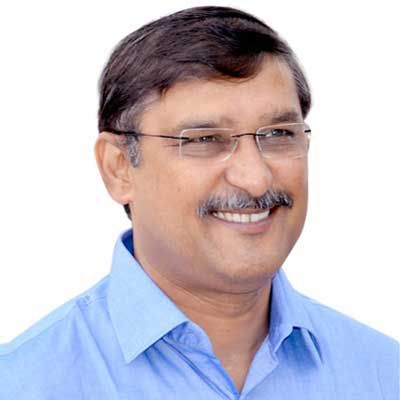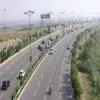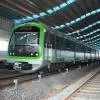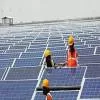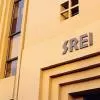- Home
- Real Estate
- Top Gear!
Top Gear!
For Hi-Tech Gears, gold was the goal – all the way. When the company conceptualised its third manufacturing plant at Bhiwadi in Rajasthan, the idea was not to build ‘just another plant’. Chairman Deep Kapuria set green building as an imperative while envisaging this plant, and Rajesh Magoo, COO-Transmission & Engine Components of Hi-Tech Gears, spearheaded the project to make it happen. Backed by adequate research, the company went on to apply for the Indian Green Building Council’s (IGBC) LEED Gold certification. Magoo gives Shriyal Sethumadhavan a play-by-play account of what went into designing the factory in perfect sync with IGBC’s guidelines....
Where it began: In 2008, Hi-Tech Gears began to direct its activities towards establishing its manufacturing plant at Bhiwadi. Realising the need for people development and social responsibility, we adopted three key philosophies – a lean logistics operating model, total employee involvement and Ecofac – that would be the centre of our activities. In the same year, we got to know of IGBC’s guidelines for green buildings, with its own rating system (LEED-India NC Version 1.0) primarily for commercial buildings. The basic parameters to approach the rating system were site selection, water and energy use, etc. Unfortunately, at that time, these common standards were not prevalent for industrial manufacturing plant setups like ours. We continued to inculcate the green building concepts in our project to bring the building operative cost down and develop a strong framework for the environment management system. To achieve this along with the best practices in plant construction and operations, we also made benchmark visits to various eco-friendly manufacturing plants. Based on all this, a blueprint in the form of a detailed image plan was prepared even before we stepped forward to engage with the architect.
It was in August 2009, when IGBC released the Green Factory Building Version 1.0 Abridged Reference Guide, that we further channelled our activities. Kamal Cogent Energy was selected as our green factory establishment facilitator, and the brief was in the form of our commitment towards social responsibility. Also, a feasibility study was conducted involving them, the architect and design consultants, and we zeroed in on IGBC ‘Gold’ as our ‘goal’. Construction began in March 2010 with a built-up area of 6,273 sq m. Our green factory was ready in April 2011; it incurred about Rs 210 million (including partial machinery).
Principle of 3-R: Every resource used by us was evaluated to ensure that it suited the principle of reduce, reuse and recycle, or the ‘principle of 3-R’. Hence, we ensured minimal wastage of energy and water during construction. Also, designs were optimised to save material, and every construction material was evaluated for recycled content; we achieved over 23 per cent recycled content material level, with 87 per cent of the materials procured locally. Moreover, 81 per cent materials diverted from the landfill was either reused on site or sold to recyclers.
Top scorer: To achieve the IGBC Gold certification, you have to secure maximum credits in many areas. One significant highlight is the need for maximum natural lighting. At this plant, the entire shop floor and administrative block offices do not require any artificial light during the day. This factor was kept in mind while designing the civil aspects and interiors of the building, and an exclusive ceiling design was planned to maximise daylighting without increasing the AC load. The outcome is that 95 per cent of the entire plant passes for daylight adequacy!
Saving water: The use of water fixtures with low flow rates as indicated in the IGBC reference table helped us achieve 58 per cent net water reduction, following the principle of reduce and recycle. Also, the site is supported by both effluent and sewage treatment facilities, and partially treated water is used to meet various process and non-process requirements. For instance, water is treated for flushing through dual plumbing and landscaping. Moreover, we planted drought-tolerant and local species as they consume less water.
Power-full: Better design and implementation are the main factors that have contributed towards conserving power. With low power consumed during the day, we have optimised the lighting design through Dialux simulation – software available for calculating the lux level of lighting required – and controlled lighting density as per the need of the area. Also, our shop floor is equipped with TL5 high bay acrylic cover light, instead of traditional metal halide or sodium vapour lamps, which is more energy-efficient, environment-friendly and cost-effective. As cooling consumes a lot of power, passive cooling was maximised. The shop floor level at a height of 9 m BOT (bottom of truss) enables hot air to rise upwards keeping the floor relatively cooler.
While the shop floor roof has been painted with high SRI (solar reflectance index) paint coating for better heat reflection and thermal insulation, thermal ventilators have been installed for better dissipation of shop floor heat. Also, cavity walls have been incorporated as part of the design wherein one wall is replaced by two walls between which hot air is trapped and expelled through the ventilation system. Moreover, efficient VRF (variable refrigerant flow) air-conditioning has been installed with the best-in-class COP (coefficient of performance) in the administration block and double blower FDV (forced distribution ventilation) for the shop floor. All these measures have helped us observe about 22 per cent lower energy use than the base case (ASHRAE baseline).
Indoor air quality: As far as the green factory requirement is concerned, adequate fresh air needs to be provided depending on the occupancy and nature of location. Hence, we created a ventilation system with a high-efficiency heat exchanger for air-conditioned spaces. We have forced ventilation in the non air-conditioned area, and the air is filtered first before being pumped into the shop floor. Periodic air quality tests are also carried out at specified points, and corrective and preventive actions are implemented if at all air quality is not at the acceptable level.
Amenities plus: Additionally, the factory is supported with an electric car charging facility. Although electric vehicles are not popular today, the thought behind this installation was to attract employees towards purchasing green vehicles in the future. Also, an organic waste composite pit generates compost, which eventually serves as rich top soil for the earth, further ensuring no methane production at the dumpsite. The entire plant is supported by Wi-Fi connectivity, and a kiosk system has been installed for employees to access information easily. Along with these, a video conferencing facility was recently installed to keep all plants connected and avoid travel.
The challenges: The major challenge was to identify green materials and their suppliers through in-depth market research and references. Also, the initial plan was to run the generator on bio diesel, which eventually did not work out owing to its scarcity in India, especially in the north. And, renewable energy was one area where we could not do much except for installing a few solar lights. In my view, the technology is sill expensive, and the government needs to intervene to make it a more viable and attractive option. The second challenge in any green project is to maintain its systems. Hence, as part of our Integrated Management System (IMS), an Environment Management System (EMS) has been put in place to sustain these systems and measures. As far as our operations are concerned, waste is still regularly generated, though below maximum permissible levels. However, this is regularly measured, and we are putting in all efforts to reduce this further.
It’s sustainable! Green and business both mean sustainability. The purpose of business is not merely to make a profit but to fulfil its social responsibility as well. Also, with the advancement of technology and increasing acceptance, green is becoming more and more viable and a way of life. Having said this, we too are making our operations more lean and green.
Project details
Developer: Hi-Tech Gears. Akhilesh Agarwal. Mob: (0) 97175 22663.
E-mail: a.agarwal@factory.hitechgears.com Website: www.hitechgears.com
Civil contractor: Sonu Builders.
RK Chaudhary. Mob: (0) 98101 26658. sonubuilders@airtelmail.in
Architects/planners: Shilpkaar Architects. Vivek Jindal. Tel: (0) 93142 35268. E-mail: vivek.jindal@shilpkaararchitects.com. Website: www.shilpkar.com
Green consultant: Kamal Cogent Energy Pvt Ltd. Rishabh Kasliwal. Mob: (0) 98281 11106. E-mail: rishabh@kamalcogentenergy.com. Website: www.kamalcogentenergy.com
Structural consultant: Roark Consulting Engineers. Pankaj Gupta. Mob: (0) 98114 37987. E-mail: roark@sol-mail.net. Website: www.roarkconsultants.com
Electrical consultant: Abett Consulting Engineers. NK Mittal. Mob: (0) 98110 76794. E-mail: abett@rediffmail.com
Electrical contractor: Zeniya Power Solutions. Yogesh Kumar Jain. Mob: (0) 94142 36256. E-mail: zeniya_electrical@rediffmail.com
Plumbing consultant: Paradise Consultants. Nafees Quressi. Mob: (0) 98109 32800. E-mail: paradiseconsultants@gmail.com. Website: www.paradiseconsultants.com
HVAC consultant: LG Electronics India Pvt Ltd. Abhishek Sharma. Mob: (0) 98733 37941. E-mail: abhishek1.sharma@lge.com. Website: www.lg.com
Flooring/tiles: Kajaria Ceramics Ltd. Tel: 011-2694 6409. Fax: 011-2694 6407. Website: www.kajariaceramics.com
Paints: Dulux. Tel: 0124-254 0400. Website: www.dulux.in
Interior contractor: Torex Interiors. Suleman. Tel: 011-2698 0268. Mob: (0) 99902 40786. E-mail: torex.del@gmail.com.
Website: www.torex.in
Interior consultants: Rudraa Associates. Ritu Nangia. Mob: (0) 98118 01886. E-mail: rudraa@rudraaassociates.com
Rajesh Magoo’s perspective
“Globally, the green building movement started in the early 1990s; in India, it was introduced over a decade ago. Largely, India is still growing in terms of sustainable/ energy efficiency/green building awareness. And, in this direction, IGBC is promoting this movement in India in a big way. With such efforts, the concept of green buildings is bound to grow; but, there is still a far way to go! Waste reduction through lean philosophy, which is already a widely accepted practice in the industry, is nothing but green. Usually, these are viewed merely as cost-reduction activities and not conservation of natural resources. It is important to note that where the rate of resource depletion is more than the rate of generation, inflationary effect is certain and
conservation is the only solution.”
Hi-Tech Gears Plant-3 at Bhiwadi in Rajasthan has gone ‘Gold’ with its IGBC LEED certification.For Hi-Tech Gears, gold was the goal – all the way. When the company conceptualised its third manufacturing plant at Bhiwadi in Rajasthan, the idea was not to build ‘just another plant’. Chairman Deep Kapuria set green building as an imperative while envisaging this plant, and Rajesh Magoo, COO-Transmission & Engine Components of Hi-Tech Gears, spearheaded the project to make it happen. Backed by adequate research, the company went on to apply for the Indian Green Building Council’s (IGBC) LEED Gold certification. Magoo gives Shriyal Sethumadhavan a play-by-play account of what went into designing the factory in perfect sync with IGBC’s guidelines....Where it began: In 2008, Hi-Tech Gears began to direct its activities towards establishing its manufacturing plant at Bhiwadi. Realising the need for people development and social responsibility, we adopted three key philosophies – a lean logistics operating model, total employee involvement and Ecofac – that would be the centre of our activities. In the same year, we got to know of IGBC’s guidelines for green buildings, with its own rating system (LEED-India NC Version 1.0) primarily for commercial buildings. The basic parameters to approach the rating system were site selection, water and energy use, etc. Unfortunately, at that time, these common standards were not prevalent for industrial manufacturing plant setups like ours. We continued to inculcate the green building concepts in our project to bring the building operative cost down and develop a strong framework for the environment management system. To achieve this along with the best practices in plant construction and operations, we also made benchmark visits to various eco-friendly manufacturing plants. Based on all this, a blueprint in the form of a detailed image plan was prepared even before we stepped forward to engage with the architect.It was in August 2009, when IGBC released the Green Factory Building Version 1.0 Abridged Reference Guide, that we further channelled our activities. Kamal Cogent Energy was selected as our green factory establishment facilitator, and the brief was in the form of our commitment towards social responsibility. Also, a feasibility study was conducted involving them, the architect and design consultants, and we zeroed in on IGBC ‘Gold’ as our ‘goal’. Construction began in March 2010 with a built-up area of 6,273 sq m. Our green factory was ready in April 2011; it incurred about Rs 210 million (including partial machinery).Principle of 3-R: Every resource used by us was evaluated to ensure that it suited the principle of reduce, reuse and recycle, or the ‘principle of 3-R’. Hence, we ensured minimal wastage of energy and water during construction. Also, designs were optimised to save material, and every construction material was evaluated for recycled content; we achieved over 23 per cent recycled content material level, with 87 per cent of the materials procured locally. Moreover, 81 per cent materials diverted from the landfill was either reused on site or sold to recyclers.Top scorer: To achieve the IGBC Gold certification, you have to secure maximum credits in many areas. One significant highlight is the need for maximum natural lighting. At this plant, the entire shop floor and administrative block offices do not require any artificial light during the day. This factor was kept in mind while designing the civil aspects and interiors of the building, and an exclusive ceiling design was planned to maximise daylighting without increasing the AC load. The outcome is that 95 per cent of the entire plant passes for daylight adequacy!Saving water: The use of water fixtures with low flow rates as indicated in the IGBC reference table helped us achieve 58 per cent net water reduction, following the principle of reduce and recycle. Also, the site is supported by both effluent and sewage treatment facilities, and partially treated water is used to meet various process and non-process requirements. For instance, water is treated for flushing through dual plumbing and landscaping. Moreover, we planted drought-tolerant and local species as they consume less water.Power-full: Better design and implementation are the main factors that have contributed towards conserving power. With low power consumed during the day, we have optimised the lighting design through Dialux simulation – software available for calculating the lux level of lighting required – and controlled lighting density as per the need of the area. Also, our shop floor is equipped with TL5 high bay acrylic cover light, instead of traditional metal halide or sodium vapour lamps, which is more energy-efficient, environment-friendly and cost-effective. As cooling consumes a lot of power, passive cooling was maximised. The shop floor level at a height of 9 m BOT (bottom of truss) enables hot air to rise upwards keeping the floor relatively cooler.While the shop floor roof has been painted with high SRI (solar reflectance index) paint coating for better heat reflection and thermal insulation, thermal ventilators have been installed for better dissipation of shop floor heat. Also, cavity walls have been incorporated as part of the design wherein one wall is replaced by two walls between which hot air is trapped and expelled through the ventilation system. Moreover, efficient VRF (variable refrigerant flow) air-conditioning has been installed with the best-in-class COP (coefficient of performance) in the administration block and double blower FDV (forced distribution ventilation) for the shop floor. All these measures have helped us observe about 22 per cent lower energy use than the base case (ASHRAE baseline).Indoor air quality: As far as the green factory requirement is concerned, adequate fresh air needs to be provided depending on the occupancy and nature of location. Hence, we created a ventilation system with a high-efficiency heat exchanger for air-conditioned spaces. We have forced ventilation in the non air-conditioned area, and the air is filtered first before being pumped into the shop floor. Periodic air quality tests are also carried out at specified points, and corrective and preventive actions are implemented if at all air quality is not at the acceptable level.Amenities plus: Additionally, the factory is supported with an electric car charging facility. Although electric vehicles are not popular today, the thought behind this installation was to attract employees towards purchasing green vehicles in the future. Also, an organic waste composite pit generates compost, which eventually serves as rich top soil for the earth, further ensuring no methane production at the dumpsite. The entire plant is supported by Wi-Fi connectivity, and a kiosk system has been installed for employees to access information easily. Along with these, a video conferencing facility was recently installed to keep all plants connected and avoid travel.The challenges: The major challenge was to identify green materials and their suppliers through in-depth market research and references. Also, the initial plan was to run the generator on bio diesel, which eventually did not work out owing to its scarcity in India, especially in the north. And, renewable energy was one area where we could not do much except for installing a few solar lights. In my view, the technology is sill expensive, and the government needs to intervene to make it a more viable and attractive option. The second challenge in any green project is to maintain its systems. Hence, as part of our Integrated Management System (IMS), an Environment Management System (EMS) has been put in place to sustain these systems and measures. As far as our operations are concerned, waste is still regularly generated, though below maximum permissible levels. However, this is regularly measured, and we are putting in all efforts to reduce this further.It’s sustainable! Green and business both mean sustainability. The purpose of business is not merely to make a profit but to fulfil its social responsibility as well. Also, with the advancement of technology and increasing acceptance, green is becoming more and more viable and a way of life. Having said this, we too are making our operations more lean and green.Project detailsDeveloper: Hi-Tech Gears. Akhilesh Agarwal. Mob: (0) 97175 22663. E-mail: a.agarwal@factory.hitechgears.com Website: www.hitechgears.comCivil contractor: Sonu Builders. RK Chaudhary. Mob: (0) 98101 26658. sonubuilders@airtelmail.inArchitects/planners: Shilpkaar Architects. Vivek Jindal. Tel: (0) 93142 35268. E-mail: vivek.jindal@shilpkaararchitects.com. Website: www.shilpkar.comGreen consultant: Kamal Cogent Energy Pvt Ltd. Rishabh Kasliwal. Mob: (0) 98281 11106. E-mail: rishabh@kamalcogentenergy.com. Website: www.kamalcogentenergy.com Structural consultant: Roark Consulting Engineers. Pankaj Gupta. Mob: (0) 98114 37987. E-mail: roark@sol-mail.net. Website: www.roarkconsultants.comElectrical consultant: Abett Consulting Engineers. NK Mittal. Mob: (0) 98110 76794. E-mail: abett@rediffmail.comElectrical contractor: Zeniya Power Solutions. Yogesh Kumar Jain. Mob: (0) 94142 36256. E-mail: zeniya_electrical@rediffmail.com Plumbing consultant: Paradise Consultants. Nafees Quressi. Mob: (0) 98109 32800. E-mail: paradiseconsultants@gmail.com. Website: www.paradiseconsultants.com HVAC consultant: LG Electronics India Pvt Ltd. Abhishek Sharma. Mob: (0) 98733 37941. E-mail: abhishek1.sharma@lge.com. Website: www.lg.comFlooring/tiles: Kajaria Ceramics Ltd. Tel: 011-2694 6409. Fax: 011-2694 6407. Website: www.kajariaceramics.com Paints: Dulux. Tel: 0124-254 0400. Website: www.dulux.inInterior contractor: Torex Interiors. Suleman. Tel: 011-2698 0268. Mob: (0) 99902 40786. E-mail: torex.del@gmail.com. Website: www.torex.inInterior consultants: Rudraa Associates. Ritu Nangia. Mob: (0) 98118 01886. E-mail: rudraa@rudraaassociates.com Rajesh Magoo’s perspective“Globally, the green building movement started in the early 1990s; in India, it was introduced over a decade ago. Largely, India is still growing in terms of sustainable/ energy efficiency/green building awareness. And, in this direction, IGBC is promoting this movement in India in a big way. With such efforts, the concept of green buildings is bound to grow; but, there is still a far way to go! Waste reduction through lean philosophy, which is already a widely accepted practice in the industry, is nothing but green. Usually, these are viewed merely as cost-reduction activities and not conservation of natural resources. It is important to note that where the rate of resource depletion is more than the rate of generation, inflationary effect is certain and conservation is the only solution.”


